A film isn’t ready for shooting the minute the script has been written and the parts have been cast.
This is pretty obvious: there’s a lot of steps to go through before a project can fully become a film: cameras, lighting, music, sets, special effects, costumes, and tons more that have to go into piecing together a coherent narrative in a way that makes sense using editing and other filmmaking tricks, turning filmed sequences into scenes that tell a story. This is a usage of the production design of the film: using the elements at the filmmaker’s disposal in order to build the ‘film world’ and make it realistic enough that the audience buys it for a while.

This is where the production team comes in.
The job of the behind-the-scenes crew, everyone from the director to the production assistants, is to create this ‘film world’, in any way they can, using cinematography, costuming, special effects,lighting, and everything else at their disposal to convince the audience for a brief period that what they’re seeing is real. These elements, when used well, can capture the attention of an audience and turn a ‘good’ film with a solid story and characters and turn it into a cinematic classic, all through the clever use of movie magic.
And, of course, aside from looking good and being believable, these ‘facets of film’ are also used to tell the story.
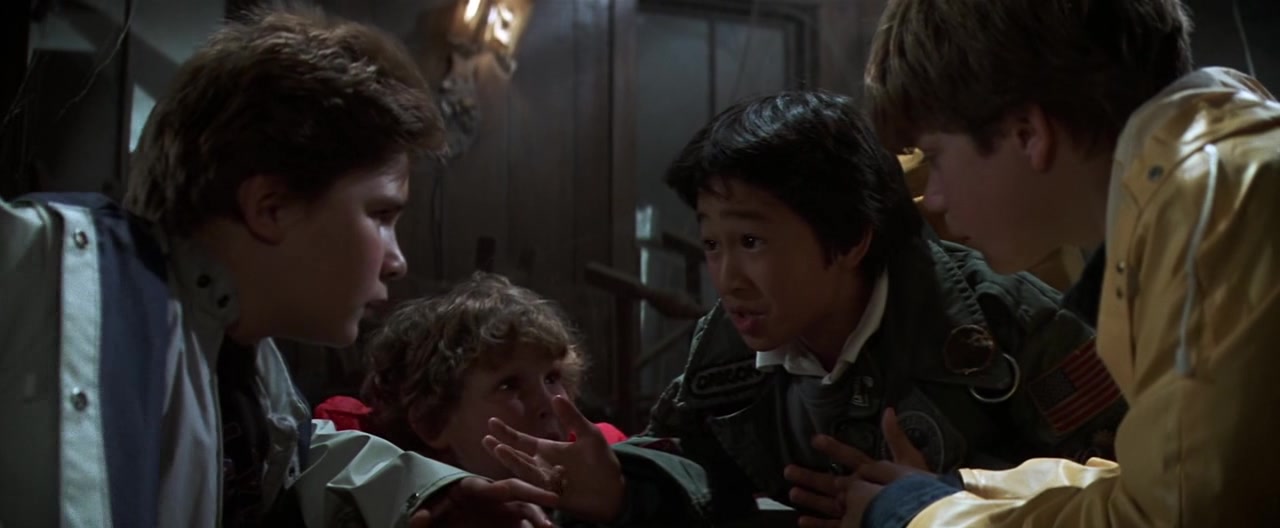
These elements, cinematography, sets, etc., are used to highlight the plot and characters to the audience in the most efficient way possible. Although it’s true that some films accomplish this better than others, the best films use these ‘facets of film’ wisely, conveying information to the viewers in ways that make sense, making a film more understandable and enjoyable.
In other words: today, we’re going to talk about what makes The Goonies a movie instead of just a story, and asking ourselves one simple question:
Does The Goonies use its ‘movie magic’ well, or not?
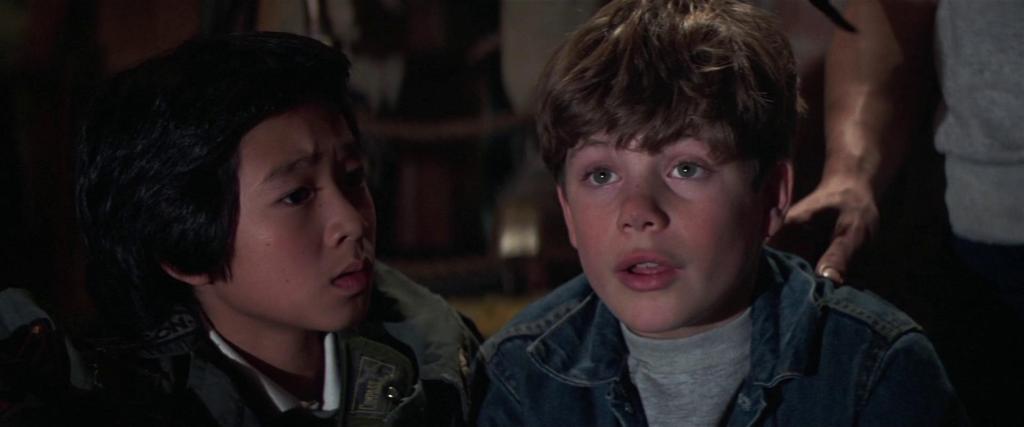
Let’s take a look, starting with something that can seem kind of simple: cinematography.
The Goonies isn’t exactly an ‘arthouse’ film. By that, I mean that to the average movie-goer, there’s not much in artistic shots: the movie is focused on getting to the point. But that doesn’t mean it can’t look good while doing it.
Cinematography is a hugely important feature of film, one that is often overlooked. Audiences tend to underestimate the value that a camera, the ‘eyes’ into the film world, actually has: how the camera ‘looks’, and therefore allows us to look at a scene can be hugely impactful. Such is the case for The Goonies.
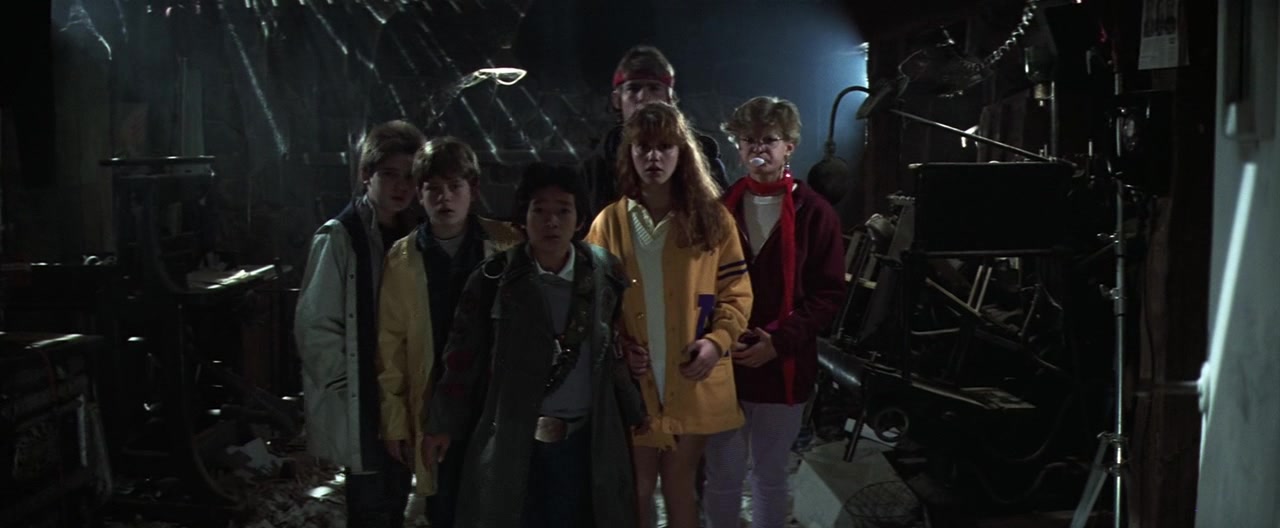
There are a few shots within The Goonies that everyone just remembers. The first time the kids lay eyes on the pirate ship, their final goal, is a hugely memorable moment, when the camera switches from the open-mouthed, awed expressions of the Goonies to the hugely impressive pirate ship, entirely built as a set for the film. Other shots, like the reveal of the bone-organ, or the first shot of Sloth from behind, his chained hands held up against the light, stick in people’s minds: or the simple but effective shot moving to focus on Mikey leaning over his porch railing.
These shots are certainly strong and memorable, but they also convey a lot of interesting information to the audience all at once, which is very important. In one split second, the viewers understand the magnitude of the discovery of One-Eyed Willy’s pirate ship, the terror of the dead body in the freezer, the miraculous recovery of the jewels to save the Goondocks, the relief of Mr. Walsh tearing up the contract and throwing it into the air.
These shots are designed to evoke emotions in their audience, giving us a perfect viewing point into the film’s world, allowing us to ride alongside these characters and experience what they’re experiencing: the fear, the joy, the laughter and the excitement, and the camerawork more than achieves its goal. The cinematography is effective without being showy, showing off when it needs to, and being simple and small when it fits the tone better.
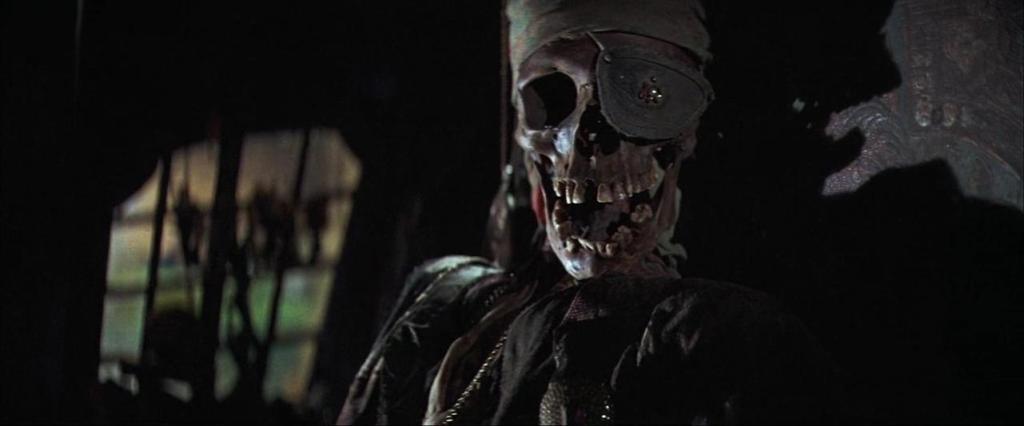
A big portion of the film’s appearance is for sure in the cinematography, but honestly, there’s not much point to good camerawork if there’s nothing to shoot. Thankfully, the production design of The Goonies doesn’t disappoint.
Every setting in this film feels solid and lived in, from Mikey’s house to the beat-up old restaurant, to the caves, and, of course, the pirate ship. Richard Donner and Steven Spielberg (Director and producer of The Goonies, respectively) had, at this point, a bit of experience with the special effects department, and it shows in the film’s final look. Spielberg’s iconic Indiana Jones style sets and effects are echoed here in the cave sequences, with booby traps, skeletons, and the claustrophobic, dirty caverns convincing the audience effortlessly of their authenticity.
The entire film is a visual delight, with the production design clearly putting forth a lot of effort into making the movie look good, from the pirate ship to the prosthetics on John Matuszak to bring Sloth to life.

Despite the magnificent sets, there isn’t actually much in ‘visual effects’ in the film itself (especially once the octopus scene was cut), besides the prosthetic effects used for Sloth (very impressive in their own right). There are a few notable scenes: the floor dropping out from underneath Mouth (achieved by attaching a cable to Corey Feldman’s belt and collapsing the set floor underneath) being one of the more impressive of the various Rube Goldberg booby-trap setups throughout the entire film, and the cave collapsing prove to be a few of the most visually impressive effects in the entire film, furthering the story along and making it look believable.
There are other important visual things too: the costumes on the characters (Brand’s exercise wear, Data’s big, baggy trench coat with his inventions underneath, Mikey’s jean-jacket, Mouth’s Purple Rain t-shirt and Chunk’s Hawaiian shirt) all serve as legitimately distinct clues to tell kids apart in clumped together shots, but also works well as character building, coding in different outfits that match personalities, and even the props that kids have with them are hugely telling. These include Mikey’s inhaler, Mouth’s comb, and, of course, Data’s inventions, all elements that immediately tell the audience something about their personality without having to come out and say it in words.
In short, the visual storytelling of The Goonies is pretty darn competent.
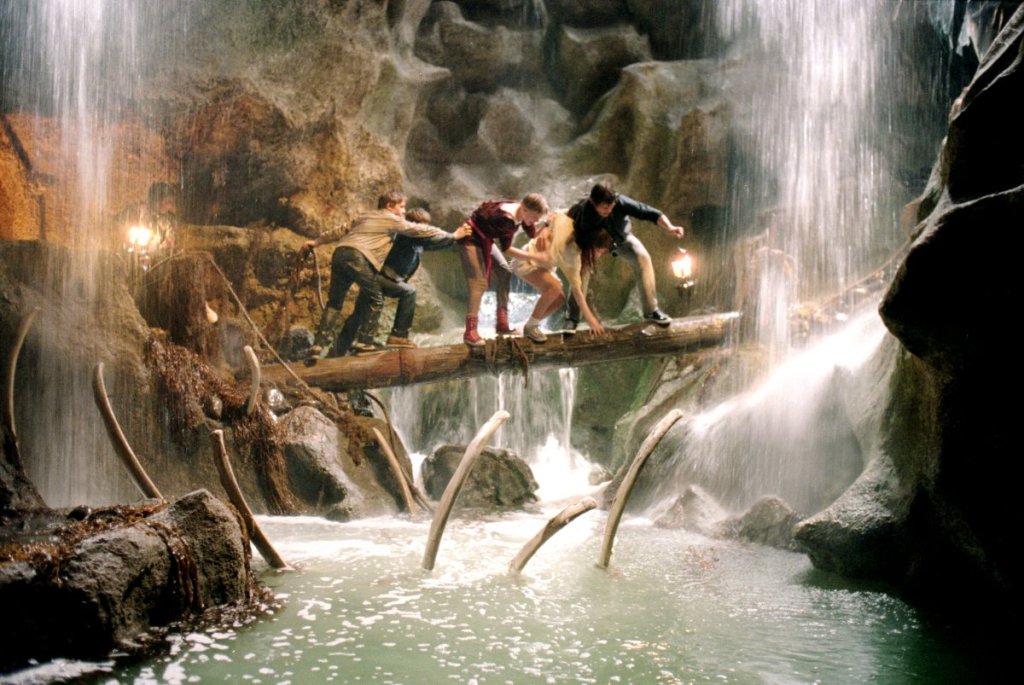
But the visuals can only do so much.
The score of The Goonies (by Dave Grusin) works perfectly to form the backbone of every scene, from the merry tune that plays over Data’s inventions to the thrilling soundtrack that plays over the Fratellis’ escape at the beginning of the film. Every scene hits its mark thanks in no small part to the music in the background: reflecting character emotions and putting the audience right in with them, emphasizing huge moments like One-Eyed Willy’s pirate ship and playing up to smaller scenes, like the wishing well.
It also serves perfectly to underline what’s really important: the performances.
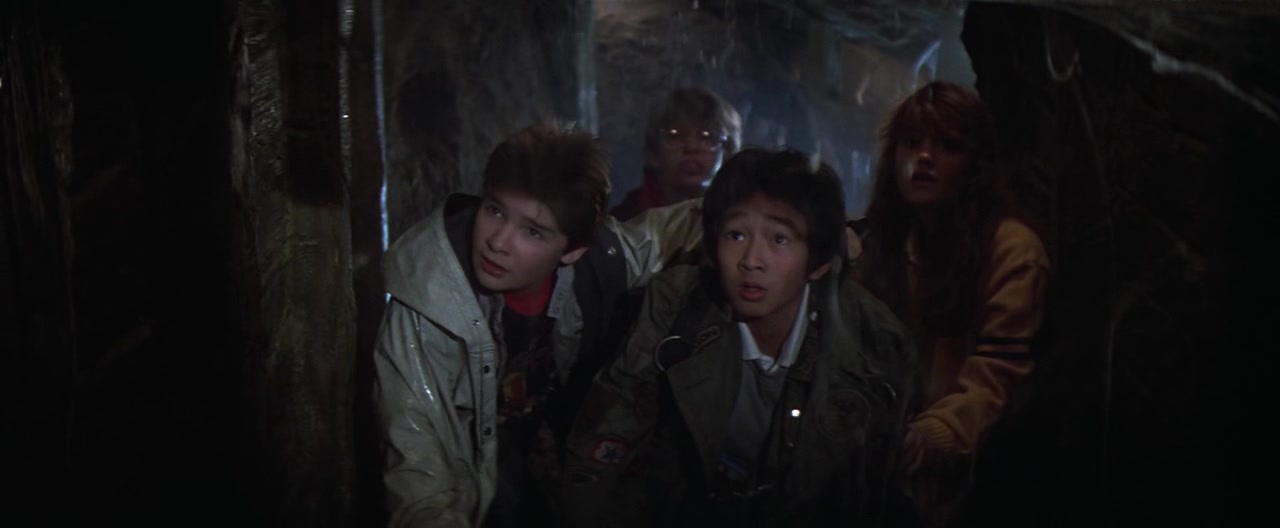
There’s more to a great movie production than sets, special effects and music. In the end, no matter how impressive, the production of a film doesn’t really amount to anything if the characters aren’t believable. The movie really rests on the shoulders of the performers: it’s on the actors to try to sell not only their surroundings and story, but the characters themselves, making an audience buy into the fact that they are real, and going through these experiences.
In The Goonies?
The entire cast steps up to the plate.
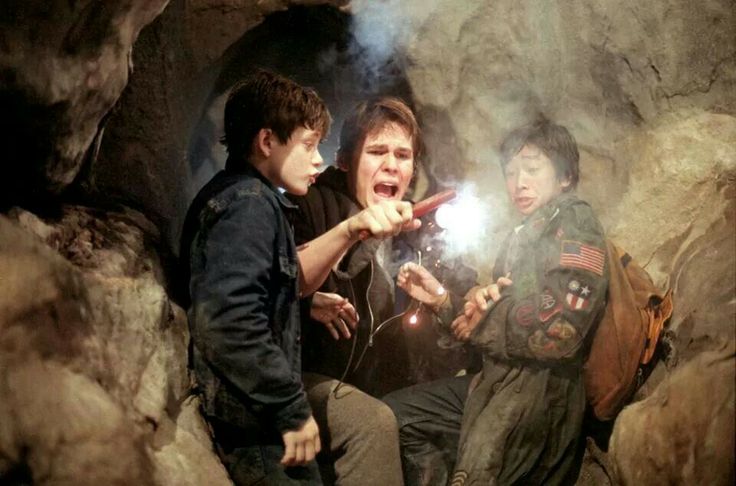
Sean Astin’s performance as Mikey is 100% wholehearted and earnest, genuine and inspiring. He is believable as the leader, and as a child with big dreams and big ideas, without being so wide-eyed as to be unrealistic, with a realistic way of talking that siblings around the world recognize. Jeff Cohen as Chunk is larger than life, over-the-top for every moment of screen time, constantly energetic in both terror and excitement, convincingly portraying a kid who’s scared out of his mind, but sticks it through for the sake of his friends. Ke Huy Quan easily persuades an audience of Data’s intelligence and charm, quirky behavior lining up with a ‘boy genius gadgeteer’ personality that is tempered with moments of irritation and frustration, as well as a gutsy streak that gets a little overshadowed by the antics of the others around him. Corey Feldman as Mouth is similarly believable as a snarky kid with too much attitude. Despite every character’s flaws, each actor manages to make each performance overall likeable and charming. Thankfully, this doesn’t stop with the kids.
Josh Brolin is believably exhausted and somewhere between childish and grown-up as Mikey’s older brother, Brand, pulling off an even mix that makes him believably grounded, but still able to be swept up in the adventure. Kerri Green as Andy isn’t given a lot to do, but she’s still entertaining and charming with the material given to her, much like Martha Plimpton as Stef, who delivers her snarky, sarcastic dialogue extremely well.
The heroes aren’t the only ones turning in great performances. Anne Ramsey is incredibly, and memorably, threatening as Mama Fratelli, and Robert Davi and Joe Pantoliano are entertainingly intimidating as Jake and Francis Fratelli, bickering amongst each other and getting smacked around with utmost believability, despite the ridiculousness of the situation. John Matuszak is wonderful underneath the prosthetics as Sloth, who, while never a villain, doesn’t officially become a hero until further into the film. Aside from these, the movie is full of little performances from other players, and everyone fills their part remarkably well.
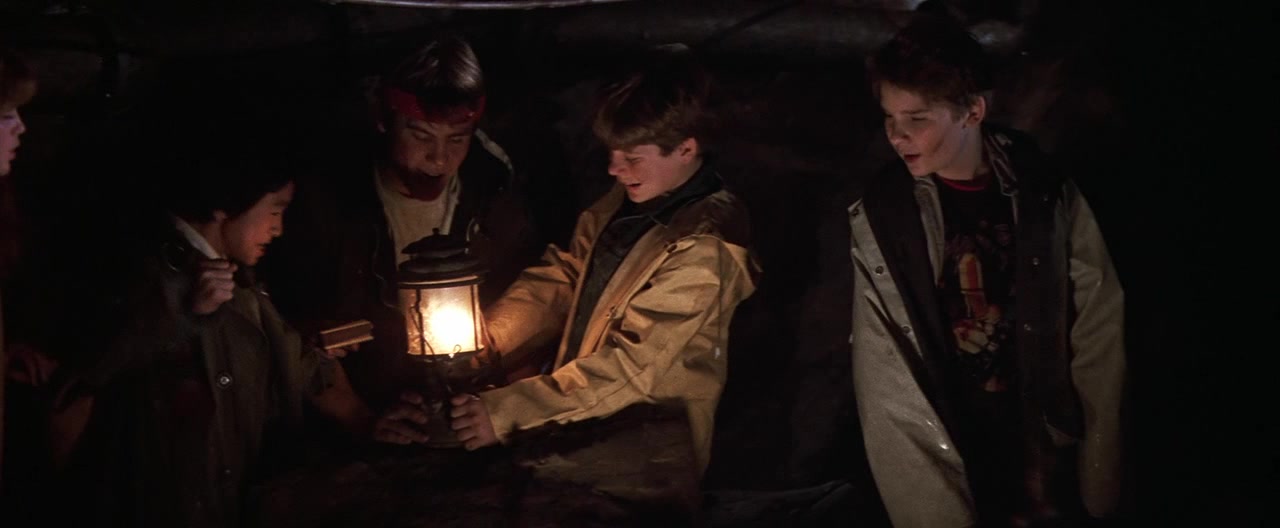
Every character in The Goonies comes across exactly as they should: as characters in a kid’s adventure story. Each performance is perfectly suited to each character: not at all subtle, but energetic and entertaining. They are kids on a mission, with complete sincerity and consistency in their performances that help the audience to pretend that this is all real.
These performances are the cincher, the final step, the part that people remember and the element that solidifies this film as a family classic, continuing to entertain people over thirty years later.
In short? With people like Richard Donner and Steven Spieberg working behind the scenes, it’s not much of a surprise that The Goonies was an example of efficient filmmaking and visual storytelling. It’s a fast paced adventure story, a roller-coaster on film designed to take the audience along for the ride without asking any questions, and in that, it greatly succeeds.
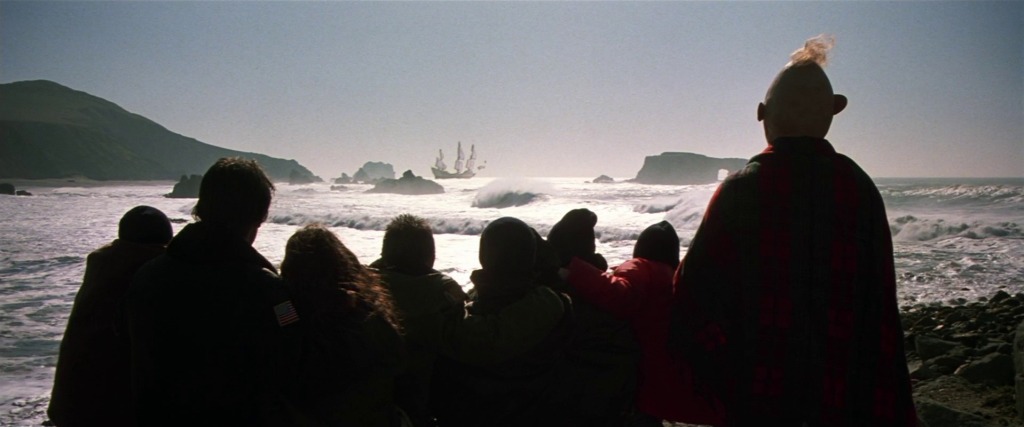
The Goonies seemed destined for greatness from the moment it first released, with all of its ‘facets of filmmaking’ falling into place to create the perfect family adventure film, but, of course, that wasn’t an accident. Every movie is the result of a lot of hard work from a lot of different people, and The Goonies is no exception.
Thank you guys so much for reading! Join us next time where we’re going to be discussing the behind-the-scenes story of The Goonies in ‘Facets of Filmmaking’. I hope to see you there!